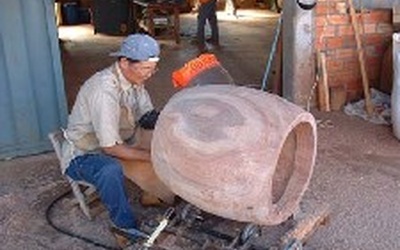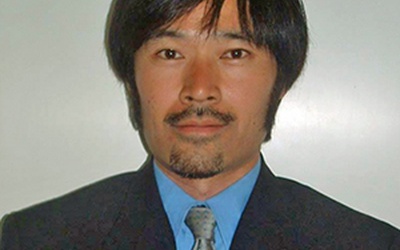The Japantown in Brazil

The Bairro Oriental (Oriental neighboorhood) of São Paulo - living within the chaos of its walls, the same question crossed my aching mind. ‘Why did these Japanese people traverse the ocean and build a town for themselves half way cross the planet?’ In this column, the author conveys the history and current state of the Japantowns in Brazil he has visited, while simultaneously being conscious of the above question.
Stories from this series
Chapter 4 (Auxiliary Chapter) Yguazú Colony - A Community of Craftsmen
May 17, 2007 • Sachio Negawa
From January to February of 2007, I took a trip through Paraguay and the northern region of Paraná. Though the main goal of this series is to bring to light the history and current state of Japantowns in Brazil, in this auxiliary chapter, I would like to include my own impressions of the Nikkei colony of Yguazú from my visit. Foz do Iguaçu, famous for the Iguazu falls, is connected to Paraguay by a single bridge over the Paraná River. Once …
Chapter 3: The Conde District - Brazil’s First Japantown - 3) The Storm of War and the Chaotic Aftermath
April 27, 2007 • Sachio Negawa
Even after the Taishō Elementary School, Brazil’s first Nikkei schooling system, moved to San Joaquin Street, the Japantown of the Conde District continued to grow. It is believed that its most prosperous days were between the mid-1930s and around 1940. The Japanese community in São Paulo city at this time had risen out of the bleak years of 1914-15. The residents of Conde had “climbed up the hill,” reaching the height of the Conselheiro Furtado era, and advanced to Conde …
Chapter 2: The Conde District - Brazil’s First Japantown - 2) The Birth of Taishō Elementary School
April 5, 2007 • Sachio Negawa
Because Japanese community groups and parent’s associations provided the foundation for the management of many of the Nikkei school systems before the war, it was natural for these schools to be established in areas with large Nikkei populations. Here, I would like to provide a general overview of the Taishō Elementary School which was established in the Conde District (Reference Map 2, 3, 4), the first Japantown in Brazil, and the circumstances of those days. The Taishō Elementary School was …
Chapter 1 The Conde District - Brazil’s First Japantown - 1) Origins
March 17, 2007 • Sachio Negawa
São Paulo is a city of hills. When walking around Centro, the downtown area, you may be overwhelmed by the numerous slopes and wonder why a town was built in an area with so many hills. On January 25, 1554, Father José de Ancheta, along with 13 other Jesuit priests, established a town with Saint Paolo as its guardian angel on the Piratininga plateau (FAUSTO, 1994, p.93). The town was built at the top of the hill in order to …
Introduction
March 16, 2007 • Sachio Negawa
The Bairro Oriental (Oriental neighborhood) of São Paulo - living within the chaos of its walls, the same question crossed my aching mind. ‘Why did these Japanese people traverse the ocean and build a town for themselves half way cross the planet?’ Ordinarily, I am in charge of the subjects of ‘Japanese language’ and ‘Japanese culture’ at a university in Brazil. When conversing with Brazilian college students, I often come across the stereotypical idea that Japanese people are unsociable and reclusive. …
第15回 (最終回) — 日本人街の現在と明日
July 24, 2008 • Sachio Negawa
サンパウロに行けば、「日本」に会える。サンパウロから約1000キロも離れた内陸ブラジリアの若者たちには、そんな共通認識がある。その「サンパウロ」は、ばくぜんと東洋街を指しているようだ。 今年2008年5月22、23日に行われた日本人カブキ・ロック・アーチスト雅(Miyabi)のコンサートには、筆者の教え子たちもブラジリアか ら駆けつけた。会場は東洋街エリアの中心の一つ、日本文化協会の大講堂だったが、チケットは1200席全席が二週間前に完売したという。文化協会前では、 コン…








